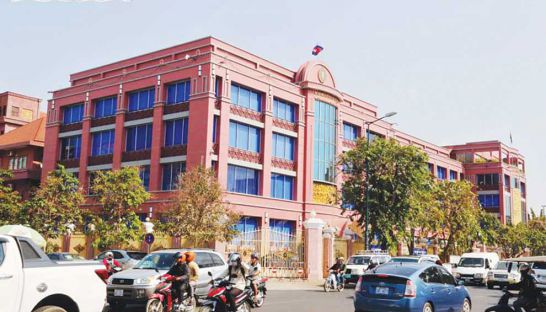Banks covering their assets
Banks covering their assets
Cambodian financial institutions surveyed yesterday said they were in compliance with the central bank’s revised liquidity coverage ratio (LCR) requirements as the deadline passed to increase their cash and highly liquid assets to weather any internal or external shocks.

The National Bank of Cambodia (NBC) announced an incremental increase in the LCR in a prakas issued last December, giving banks and microfinance institutions (MFIs) until September 1 to raise their LCR to 60 per cent of their projected 30-day net cash outflows. The increase is a step toward the goal of 100 per cent LCR by 2020, and has been heralded as a positive step to strengthening the Kingdom’s financial industry and cooling rapid credit growth.
Charles Vann, executive vice president of Canadia Bank, said that while he could not disclose the bank’s LCR, it met the 60 per cent requirement. “The National Bank of Cambodia has all of the liquidity reporting and will reveal to the industry who has followed the prakas,” he said.
Although Vann said he could not speak for each individual bank or MFI, he believed they had been given adequate time to meet the deadline and that the annual ratio increases through 2020 should be easy to achieve.
“I think as our financial market becomes more sophisticated and strong it will become easier for institutions to comply,” he said.
He noted that although the prakas had to a certain extent caused credit growth to contract, as it makes financial institutions less able to lend out short-term debt, a moderate degree of credit growth was healthy.
“Ongoing steady growth is needed for market vitality,” he said.
Leonie Lethbridge, CEO of ANZ Royal Bank, said the higher LCR addresses several challenges particular to smaller financial institutions. She said these institutions need to build capacity in liquidity risk management, put stronger focus on deposit-raising instead of loan growth, and often have less capital, which reduces their ability to absorb shocks.
So Phonnary, executive vice president and group chief operations officer for Acleda Bank, said that the lender had fully complied with the deadline and that most of the commercial banks were in the clear. However, she warned that some MFIs could have difficulty in meeting the deadline.
“MFIs who are collecting deposits need to comply and have proper liquidity management not just to meet the NBC guidelines, but for all stakeholders in the industry,” she said. “If they have not complied, the NBC should take action and enforce its regulations.”
However, she said that there were numerous ways for MFIs to achieve a 60 per cent LCR, such as slowing lending, increasing deposits, seeking external funding or mobilising reserve capital from shareholders.
Hout Ieng Tong, president of the Cambodia Microfinance Association (CMA) and CEO of Hattha Kaksekar MFI, said the central bank had been closely monitoring the microfinance sector and he was not aware of any lender that had missed the deadline.
“I haven’t seen a single MFI that couldn’t pass the LCR deadline,” he said.
The National Bank of Cambodia could not be reached yesterday to verify which financial institutions had met its deadline.













